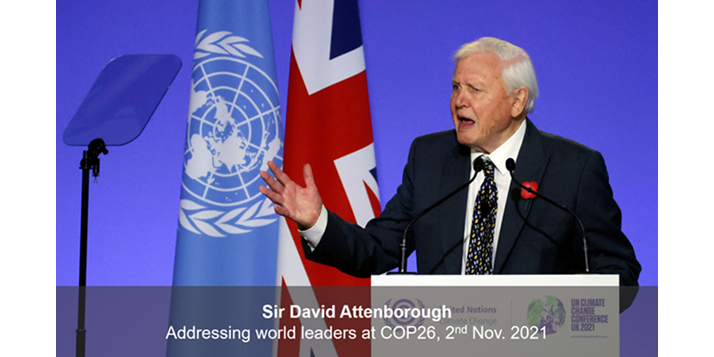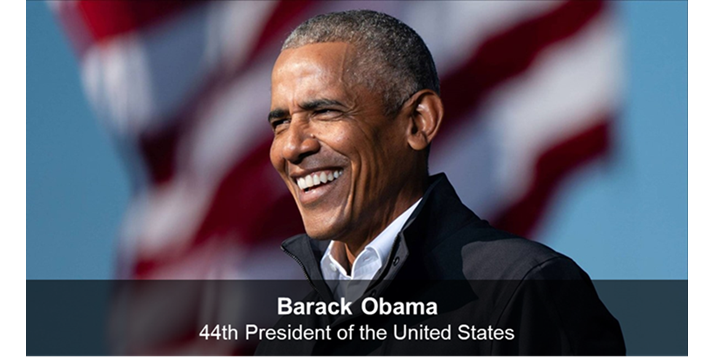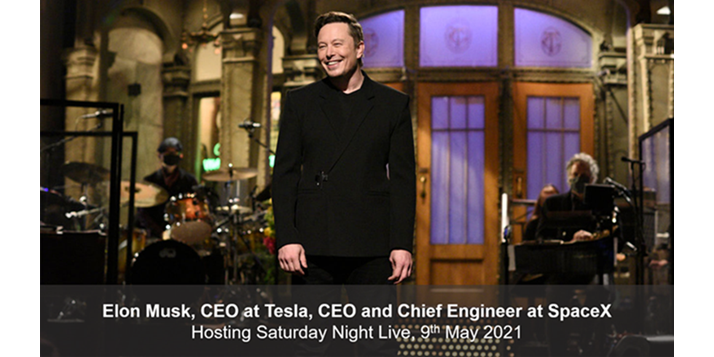
Can words save the world?
The search for a phrase to make an audience act
- Those taking the stage at COP26 in Glasgow are facing a challenge many leaders will recognise. How do you speak in a way that makes the people in front of you do more than just listen – and actually do something? Here are three approaches:
- Sir David Attenborough’s strategy was to make heroes out of his audience. He created a heroic narrative and placed delegates at the centre of it. “In my lifetime, I’ve witnessed a terrible decline. In yours, you could and should witness a wonderful recovery. That desperate hope is why the world is looking to you. And why you are here.”
- The UN Secretary General sought to use a metaphor to change perceptions of fossil fuels, creating a sinister connection. “Enough of burning and mining and drilling our way deeper. We are digging our own graves,” said Antonio Guterres.
- One of the most memorable speeches was from 15-year-old Earthshot Prize finalist Vinisha Umashankar. By the third day of the conference, audiences had heard a lot of speeches. Vinisha chose to upend audience expectations: “I am not here to speak about the future. I am the future.”
The lesson for leaders: Moving an audience to action demands more than information. Choose a strategy to elicit an emotional response.

Embracing the mid-sentence pause
The single greatest way to hold a room
- Is this the most powerful […pause…] signal of confidence? The FT’s Janan Ganesh thinks so. “Nothing – not eye-contact, not spread arms – conveys confidence like a mid-sentence pause”.
- On his side is Barack Obama, routinely lauded as the greatest orator of his generation, and a serial user of the mid-sentence pause.
- Take a look at his address to the UN General Assembly in 2014. He doesn’t just pause at the end of lines, his entire address is peppered with mid-sentence pauses.
- His predecessor in the UK Tony Blair used the same trick (on show throughout the BBC’s ‘Blair and Brown’) and you can see how in a room, not racing to fill a silence with an ‘um’ or an ‘ah’ tends to project confidence.
The lesson for leaders: Allow a moment of silence to show you’re in command of your ideas.

Confessions of 100 failed investor pitches
How heart always trumps head
- Melanie Perkins created one of the world’s most valuable startups. Her design platform Canva just received $200 million investment and is valued at $40bn. But initially she was rejected by more than 100 investors.
- What was going wrong? Perkins explains that spent those 100 pitches using slides to tell investors about the technical detail of her solution
- The revelation came when she realized she needed to articulate an emotionally resonant problem that her platform solved.
- Perkins refined the pitch – using storytelling to share her own experiences of struggling with clunky design programs – before introducing her solution to investors. This turned out to be the $40bn moment for her company.
The lesson for leaders: Every argument needs an inspiration. Even a shrewd details-focused investor needs to know why you care.

Can you laugh at yourself?
Elon Musk’s supercharged awkwardness
- Elon Musk is an uncomfortable watch. As he admits, he talks too fast and doesn’t have a lot of ‘intonational variation’.
- But watch his monologue as the host of Saturday Night Live. He encourages the audience to laugh at him, and his unconventional delivery style. So they do.
- People who are self-deprecating in a public speaking context are perceived as being secure. Research shows they build trust.
- A team of comedy writers probably helps too.
The lesson for leaders: When the context is right, laugh at yourself.

